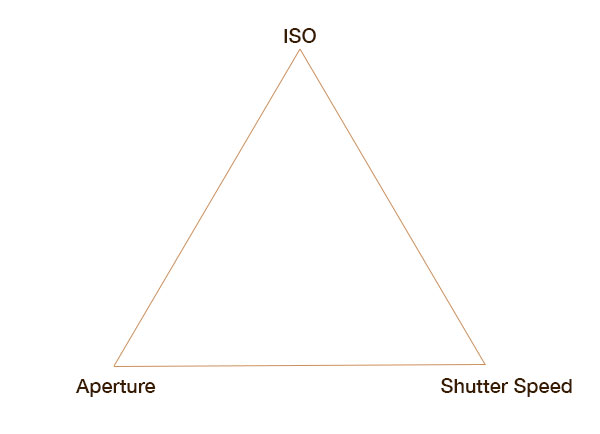Understanding the Exposure Triangle

The ‘exposure triangle’ is a diagram used to help us understand the relationship between the three main elements which effect the exposure of a photo. They are:


If you want to understand what exactly each element is, then look through the links above. This article will discuss the relationship between each, and when you should be adjusting them.
How They Work Together
You should know by now that a wider aperture (lower f-stop number) lets in more light. But every lens has a maximum aperture that it can reach, and sometimes this just isn’t wide enough to let in enough light to expose a photo properly. So what can you do?
Well, you can reduce your shutter speed. A slower shutter speed will let more light onto the sensor, allowing you to better balance the exposure. Sometimes this is all you need – you don’t always have to have very fast shutter speeds. But sometimes you do, or perhaps you are already shooting with a relatively slow shutter speed, and decreasing it further isn’t an option.
This is where your ISO comes in. The higher the ISO value, the more sensitive the sensor is to light. If you need to brighten an image to expose it properly, then increasing your ISO will do this for you. Even better, you can most likely keep your aperture and shutter speed the same too. However, a higher ISO brings more digital noise, degrading the quality of an image.
How to Use the Diagram
If there are two settings you wish to keep the same, then cover them up (with your hands, or just in your head). The remaining setting you can see is the one you must change to alter the exposure. Or, if you only have one setting that must remain the same, cover up one on the diagram. The two remaining can then be used to achieve the ideal exposure.
You will probably find yourself not needing to use the diagram like this – it is more of a visual representation of the ways to expose an image, rather than something you’ll want to actively use all the time. However, it can be very useful when you’re just starting to learn how a camera works out of its auto mode.





